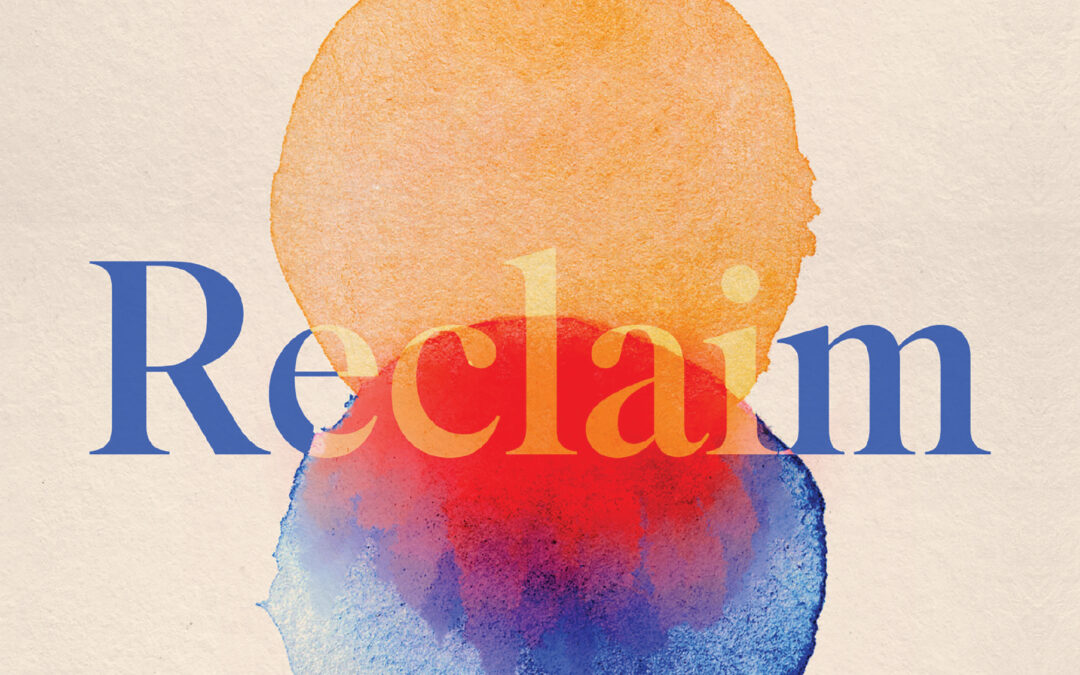Reclaim (Scribe Publications 2023) is a non-fiction book by Dr Ahona Guha about ‘understanding complex trauma and those who abuse’. A clinical and forensic psychologist, Dr Guhu provides a highly accessible work that covers a lot of ground, and is illustrated by composite case studies of her own patients, and some detail about her own experience of trauma.
Reclaim examines the psychology of complex trauma and survivors through a lens of mental health, social justice and equity, diversity, advocacy and those historically marginalised. Dr Guha asks ‘can we have a world free of violence and harm?’ and through exploring changing behaviours and systems, whether we can move towards hope, healing and optimism.
The book covers every type of trauma including the worst kinds of child sexual abuse, sexual violence, coercive control, stalking and physical abuse, and the author is clear in her introduction that as a reader, you must be aware of recognising triggers and allowing yourself to pause, and to seek professional help if you are currently in crisis. That said, Reclaim is a fascinating insight into different types of trauma, survivors, abusers, institutional abuse and invites the reader to enter a full and open discussion about these issues.
Dr Guha initially writes of the pandemic being a kind of global trauma that has revisited the question ‘what is trauma?’ and how it is defined. It talks about support, punishment, about owning your own journey and about hope. She says ‘There are few monsters in this life, but there are many damaged people who damage other people’, this in reference to explaining but not excusing the inflicting of trauma.
Each chapter navigates a specific topic. In Chapter 1, Understanding Relational Trauma, she introduces the reader to different types of trauma and why some people heal while others do not. She discusses labels, re-traumatisation by the system, diversity, representation, trauma myths and the difference between ‘difficulties’ and ‘trauma’. Chapter 2, Impacts of Complex Trauma and Betrayal, refers to defence mechanisms, trauma and shame, trauma responses, the importance of boundaries, beliefs, hypervigilance, common patterns and identity.
The Trauma Survivor in the World, Chapter 3, discusses confusion, fragmentation, defences, compensatory mechanisms, patterns of behaviour in reaction to trauma, emotional regulation or management and the impact of fractured relationships. Chapter 4, The Tasks of Relational Trauma Recovery, examines recognition and acknowledgement, choosing appropriate therapy, healing, naming and accepting traumas, the idea of radical acceptance and the differences between fighting for justice and that ‘sometimes just the quietness of being is enough’. Processing traumatic memories and managing the impact of trauma, and looking beyond the trauma to a life of purpose and meaning includes sections on labelling, where to go for help, safe therapists and boundaries.
Chapter 5 talks about The Difficult Trauma Victim and the binary of victim/perpetrator, and Chapter 6, Why People Harm, examines a range of harmful behaviour, childhood upbringing, social catalysts, entitlement and personality difficulties. Dr Guhu states: ‘We all have the capacity to harm, given the right psychological underpinnings and circumstances’. Chapter 7 is about Identifying Harmful People: using your intuition, giving yourself permission to act protectively, looking for red flags and patterns, predatory behaviour, secrecy and the traffic light flag system. She writes about the past being the best predictor of future behaviour and covers current ‘trendy’ words such as gaslighting, toxic, manipulation and triggering. Boundary breaches, consent, flexibility, secretive behaviour, feeling above the law, psychological coercion and common psychological coercive behaviours are all examined. She discusses workplace bullying, the principles in practice (safety, respect, pace of friendship development, noticing how people treat others, identifying good relationships). She talks about balance and being accountable and states that ‘Safe relationships have mutually recognised limits and boundaries, and a commitment to respectfully negotiate these boundaries. Power isn’t used indiscriminately…’
Managing Harmful People is the topic of Chapter 8, including stalkers, decreased power, increased agency, strong boundaries, managing interactions, enlisting help, taking personal responsibility, addressing bad behaviour, systematic change and responding to trauma disclosures. Chapter 9 is The Politics of Trauma (socio-political, funding, what we legitimise, who we blame, what is palatable, expectations of survivors, rules around gender and power and diversity). She explains that ‘Many women are harmed by men, some men are harmed by women, some men are harmed by men, not all men harm, and some men harm’ and that these are not mutually exclusive facts. Risk assessment and how we fail victims is also discussed.
The final section, Chapter 10, is titled Caring for the Carer, and examines chronic burnout, compassion fatigue, vicarious trauma, a trauma-informed care framework, education and support structures. Reclamation is defined as the ‘process of claiming something back or reasserting a right’. Dr Guha talks about the necessity to build a trauma-informed community and to have a genuine desire to do better. She asks what do we need as a society and as individuals to contribute to recovery from trauma and to lead to life, hope and regrowth? It seems commitment, being brave and speaking out are some answers towards reclaiming and rewriting ‘the parts of your being which have broken.’
This book is a nuanced exploration of the nature of trauma, the people it affects, and how we might, both as individuals and as a society, reduce its harm. Dr Guha’s final words are fittingly about gentleness, understanding, resilience and hope. If these subjects resonate with you, I highly recommend this book as a complex examination of thinking and behaviour around this issue.

